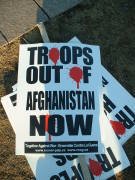While we had Vimy Celebrations this weekend coinciding with Easter, and ending today, the Australians and New Zealanders will celebrate the WWI battle of Gallipoli with Anzac Day at the end of the month.
A disaster on the scale of the battle of the Somme in WWI and Dunkirk and Dieppe.in WWII. As 'colonial' nations under the tutelage and control of the British Imperialists farmers and workers became cannon fodder in their Great War with Germany.
Tactically speaking, the plan is for British artillery to pound the Turkish position until precisely 4:30 when the ANZAC forces would attack from their trenches. In what may be an indicative blunder that no one in the military would care to admit to, the respective commanders fail to synchronize their watches. The ANZAC commander, Major Barton, realizes that the bombardment has inexplicably ceased seven minutes too soon. The Turks have had time to return to their trenches. Amazingly, the English Colonel Robinson (John Morris) orders the attack to go forward.
In what seems a counterintuitive tactic, the soldiers are ordered to empty their rifles of all ammunition and charge with "bayonets only." The first wave is cut down by heavy machine gun fire. Most of the men don’t make it but a few yards. A second wave meets an identical fate.
However for Canada, Australia and New Zealand , it was our recognition of the need for transparent autonomous military operations, that created our national identity on the battlefields of Gallipoli and Vimy.
How Hill 145 and Vimy changed everything
It was then that things changed. Instead of headquarters officers planning the operation in secrecy and isolation they did something unique. They planned the assault and then included every soldier in the plan. Maps, details and objectives were made a part of the daily training for six weeks. Model layouts of the ridge and Hill 145 were studied, not just by commanders, but by every soldier. Exercises were run in the weeks before the assault on a field laid out to simulate Hill 145 and the ridge. Units learned terrain, timing and cover. Where, up to that time, the taking of a position had been the objective of a platoon commander; it was now the objective of the whole platoon, and every soldier in that platoon knew the objective, the plan to take it and what adjacent units were doing.
The battles at Vimy and Gallipoli mark our true day of 'national' independence which would lead to real independence later from the British Empire. It is the military which creates the modern Canadian/Australian/New Zealand state's of the 20th Century from the rubble of the British Commonwealth.
Our countries national identities were formed because we fought Britain's wars, and in doing so we were blooded, and survived to challenge their ability and authority over 'our' state. Our view of ourselves as Canadians, Australians, or New Zealanders, as citizens of a nation was created in the trenches of France. Such was not the case for the State which would not come until after the Charter of Westminster and WWII. And indeed in Canada's case not until we had our own Charter in 1982.
"April 25, 1915, is a date etched in Australia's history. To many this is Australia's most important national day. Commemorative services are held at dawn, the time of the original landing."
“New Zealand’s experience at Gallipoli fostered an emerging national identity, and it’s important we create an environment that allows those traveling to Gallipoli to respectfully connect with their past and understand the massive sacrifice made by their forbearers,” said Rick Barker.
"Every nation has a creation story to tell; the First World War and the Battle of Vimy Ridge are central to the story of our country," Prime Minister Stephen Harper told those gathered, including Canadian veterans and high school students.
And it is a central event in Turkey's modern nationhood. Showing that nationalism in the 20th Century was the result of the fragmentation and destruction of the old Imperialist polities of the 19th Century.
Even though they were in the opposing ends of the battlefield, the Battle of Gallipoli left huge marks in the psyches of both Australia and New Zealand on the one side, and Turkey on the other. Even to this day, ANZAC (Australian and New Zealand Army Corps) Day is celebrated in both those countries, and it is considered that the battle marked the birth of the collective national identities of both those nations, replacing that of the collective identity of the British Empire. In Turkey, the battle is seen as one of the finest and bravest moments in the history of the Turkish people - a final surge in the defense of the motherland as the centuries-old Ottoman Empire was crumbling; which laid the grounds for the Turkish War of Independence and the foundation of the new Turkish Republic eight years later, led by Atatürk, a commander in Gallipoli himself.
See:
The Working Class Dies For Harper
Royal Newfoundlanders Died For the Seal Hunt
Draft Dodgers in Dukhbour Country
Stanway's Sombre Reflection on Somme
WWI Xmas Mutiny
Christmas in the Trenches
The Vimy MythThe Best Laid Plans
Find blog posts, photos, events and more off-site about:
WWI, ANZAC, Lest we forget, Rememberance-day, Rememberance, war, veterans, history, modernism, veterans-day, 20thCentury, Vimy Ridge, Australia, New Zealand, WWI, Gallipoli, Canada, War, military,
WWI, Somme, Battles, Newfoundland, Royal-Newfoundland-Regiment, War, History, France
Somme, Newfoundland, WWI, Stanway, EdmontonSun, Canada,
military, military-engineers, Royal-Canadian-Engineers, WWII, WWI, sappers



